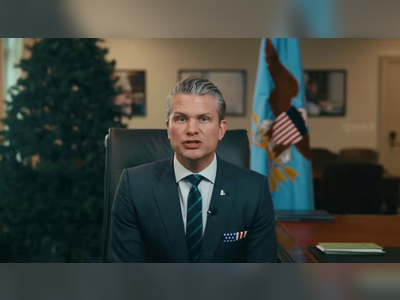Travel hacks for a long-haul flight, from seats to socks to sleep, plus how to entertain yourself on that 13-hour journey
I was going to fly to New Zealand and I was dreading it. Not the destination – it’s a place I’ve always wanted to go – but the 13-plus hours of non-stop flight, claustrophobic and inert, required to get there. I already have trouble tolerating seven- to eight-hour transatlantic flights. How would I assuage an apprehensive mind and a contorted body imprisoned in an aerodynamic fuselage hurtling high above the Pacific Ocean for what surely would feel like an eternity?
Of course, my San Francisco-to-Auckland flight is hardly the longest non-stop in service; that honour, at almost 19 hours, belongs to the Singapore-to-Newark route via Singapore Airlines. And an even lengthier flight – more than 19 hours – was recently tested by Qantas Airlines to connect Sydney and New York.
Lighter, more fuel-efficient, technologically improved aircraft make such flights possible, but the human passengers remain physiologically the same. For tips on preparing for the experience, I reached out to experts and to long-haul frequent fliers – and learned that I may worry too much. Many of my queries were generally answered with responses that would be applicable to any but the shortest, commuter-hop flights.
But there was some information that was new to me – that you shouldn’t sleep more than three hours on a flight, for example – and some unusual travel hacks.
According to TripAdvisor’s vice-president for flights, Daniel Gellert: “The best thing a flier can do to prepare for a long-haul flight is to give themselves the best seat possible.”
That means if you can’t afford business or first class, booking early is especially important on these flights. Aisle seats, naturally, are the least claustrophobic, and exit row seats – “poor man’s business class” – usually offer a bit of extra legroom. But you’ll pay an extra charge, potentially US$100 or more one-way.
Gellert also recommends first checking out Seatguru.com for detailed information on the aircraft’s specifications and seating options for your particular flight. And detailed it is, even providing dimensions and pitch for various seats.
Don’t plan to rely on the in-flight entertainment system alone. Invest some time in adding distracting material to your carry-on. Include books and magazines; make sure any movies, audiobooks or music are downloaded on your digital devices. And don’t forget your own ear buds or headphones. If you’re especially sensitive to noise, consider investing in the noise-cancelling variety.
In addition to loose-fitting clothes and shoes that can easily be slipped on and off, bring a lightweight jacket or jumper, and wear long pants and socks. Though airlines still generally supply pillows and blankets for long-haul flights, they are flimsy. Bring along your own neck support.
The one clothing item that seems especially important is compression socks, because long-haul flights put travellers at a slightly higher risk of swelling (oedema) and blood clots (deep vein thrombosis, or DVT).
Today’s compression socks are not your grandpa’s white or black knee-high variety; they now come in all manner of colours, patterns and lengths. You can choose compression that is either uniform or graduated (tighter around the ankle), mild to extra firm. Socks that are tighter still can be medically prescribed.
But you can’t rely on socks alone. You should get up every hour or two to walk around. John K. McConnell, a primary care internist, also advises that passengers “perform gentle exercises with your ankles, knees, and hips to maintain good circulation”.
Ask your doctor if you need medication to prevent clotting. But don’t take aspirin. “Aspirin has not been shown to reduce DVT risk,” says McConnell, “so taking aspirin solely for long-haul flying is not recommended.”
Well aware of the saying “a watched pot never boils”, I was especially worried about how to pass the time. Should a 13-hour flight be viewed as a unique opportunity to finish reading that which you have always deferred? (In my case, James Joyce’s Finnegans Wake, which has daunted me since college.)
“Absolutely not!” is the consensus from frequent long-haul traveller friends, who suggest thrillers or mysteries with suspenseful plotting. If your eyes tire from reading for hours on end, you can intersperse the written words with your digital device’s audible version of the same text.
The in-flight entertainment seems best indulged in carefully segmented chunks of time. If you watch one film after another, the activity becomes tedious. Alternate screen time with reading, or try something more active – such as talking with fellow passengers – which can help time pass more quickly. Doing something that requires focus helps, too.
One businessman who frequently travels to Hong Kong and Singapore plays a bridge app called “Funbridge”, which forces him to think and helps him lose track of time.
Trying to drink yourself into oblivion is probably a bad idea, according to all the experts. While a drink or two might seem like a relaxing sedative, at 35,000 feet it might feel like four or five drinks due to a condition called hypoxia – the higher the altitude, even in a pressurised cabin, the less oxygen in your blood.
In addition, alcohol’s diuretic influence exacerbates the plane’s dehydration effect (due to recirculated, filtered air that’s very low in humidity). That, in turn, can make alcohol-induced sleep fitful at best – making the flight seem even longer.
Water is better than wine. Bringing your own reusable water bottle is a good reminder to keep hydrated. “Drink enough water to produce clear to light-yellow urine every two hours or so,” says McConnell.
It would be nice to slip into some kind of sleep-inducing pod, as in sci-fi space travel, only to awake at your destination refreshed and even younger. Since that’s not an option, take steps to help yourself fall asleep more easily.
Make sure you’re already drowsy by not sleeping the night before, suggests one frequent long-haul flier. Avoid coffee and heavy meals that are difficult to digest; drink some herbal tea; relax your body by stretching, rolling shoulders and rotating feet.
One imaginative travel hack suggests you can trick your body into thinking it’s bedtime by performing the nightly ritual of going to the lavatory to brush your teeth or gargle.
Prescription sleeping pills, as well as over-the-counter sedatives and antihistamines, not only aid slumber but can mitigate nervous fliers’ anxiety. But there’s a downside, says McConnell. They “can impair a traveller during an emergency or when arriving at a destination, and ultimately make it harder to adjust to a new time zone”.
McConnell also advises passengers to “avoid sleeping for longer than three hours in a row” since an immobile body can be unhelpful for blood circulation. If you’re a heavy sleeper, it’s best to set your phone alarm (on vibrate, so as not to disturb fellow passengers). Then get up and walk around for at least five minutes, he suggests, before settling back in your seat.
But instead of sleep, I wonder, maybe its polar opposite – alertness to being alive in the moment – is the better approach? Yoga-like breathing, for example, or entering and exploring a meditative state.
A Washington consultant described a recent non-stop flight to Japan as “almost a spiritual experience”. He lost track of time as he stood near the lavatory staring out of the window, knowing he was flying over Siberia with all its mysterious connotations.
I’m not convinced of my ability to enter a meditative state, being a worrier. Perhaps I need to embrace that aspect of my personality and worry about something truly worthwhile – namely, climate change. I can use the time aloft to research carbon offsets for my 13,000-mile round trip across the ever-rising, ever-warming seas.

















